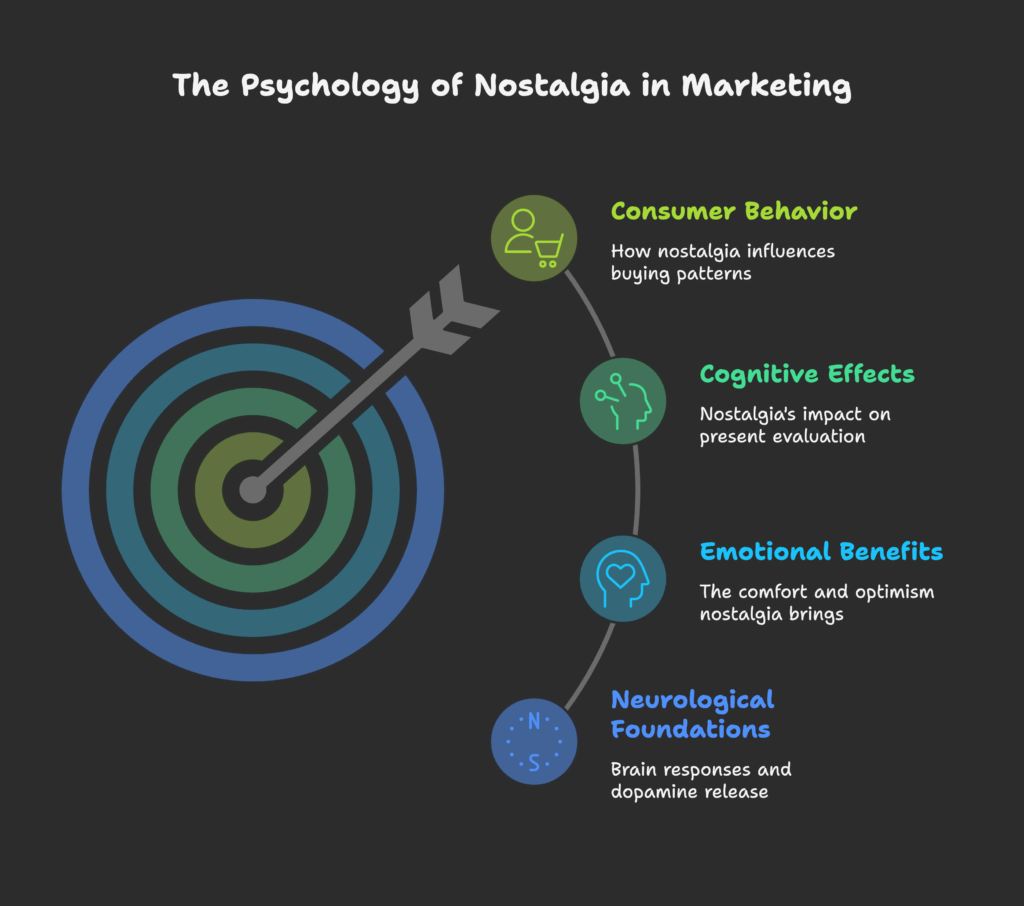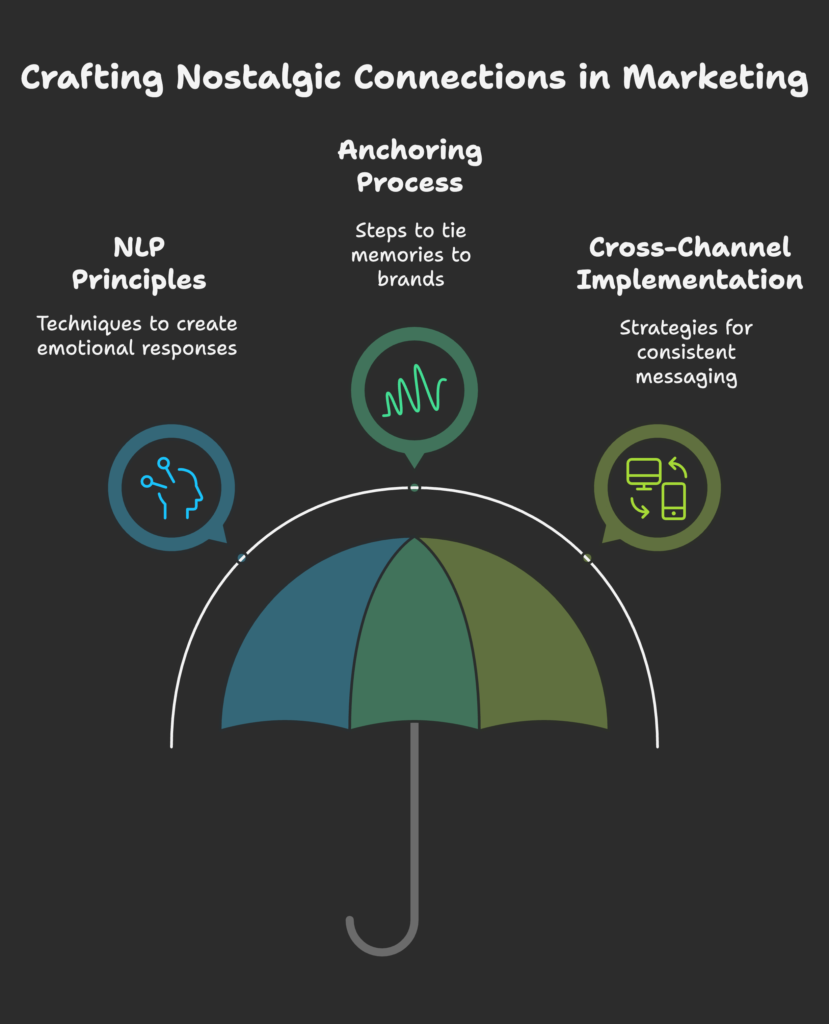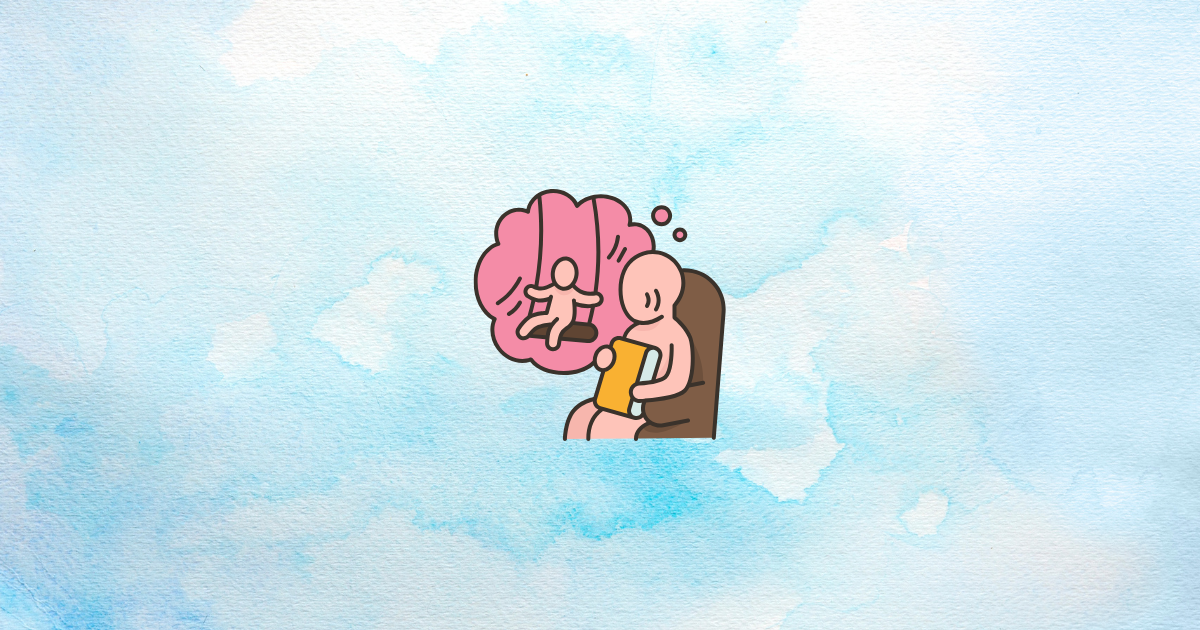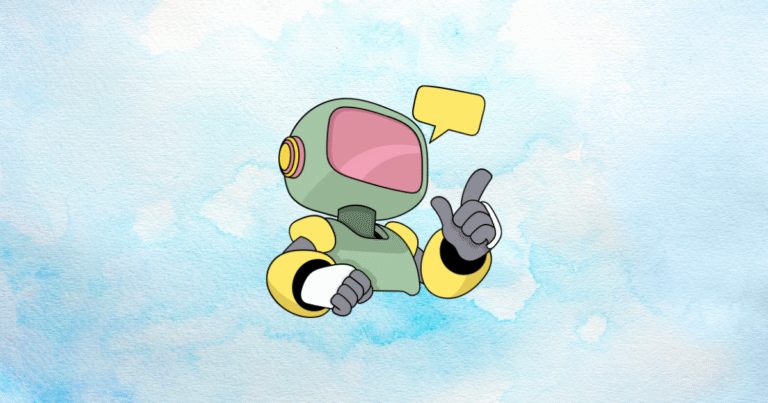Have you ever felt instantly transported back to childhood by a simple melody or an old TV commercial? That comfortable, happy feeling is nostalgia. By reading this article, you’ll learn how marketers harness nostalgia to create powerful emotional bonds that boost sales. We’ll talk about why nostalgia is so potent, where it comes from, and how you can use it to help your business. Ready to explore this delightful journey into the past? Let’s begin!
Definition and Conceptual Framework
Nostalgia in marketing is the strategic use of memories to evoke positive emotions. It started off as a medical term describing homesickness centuries ago. Today, it has evolved into a marketing technique that taps into shared stories, joyful experiences, and personal memories. By weaving these memories into campaigns, businesses can make their audiences feel connected, warm, and ready to engage.
In modern markets, this emotional link is worth a lot. People value brands that remind them of happier times, and they often reward these brands with loyalty and spending. This intersection of memory, emotion, and consumer behavior opens the door to stronger customer relationships.
We’ve just seen how nostalgia has grown from a simple longing for the past into a valuable marketing tool. But how exactly has it taken shape in today’s world? Let’s move forward and see what the current landscape looks like.
The Current Landscape of Nostalgia Marketing
Nostalgia marketing is everywhere. Recent studies show that campaigns using nostalgia can boost engagement significantly. Brands across industries—from gaming to fashion—are reviving old themes, bringing back classic logos, or referencing beloved pop culture moments. Thanks to social media, nostalgia cycles have shortened. People now crave blasts from the past more frequently.
Perhaps the most exciting part is that nostalgia unites different generations. Baby Boomers might love references to classic products, while Millennials relish the return of 90s icons. With such broad appeal, it’s no wonder nostalgia marketing is surging in popularity.
So, nostalgia is clearly on the rise. But does it really affect conversions and results? Let’s see why “emotional anchoring” matters in the next section.
The Business Case for Emotional Anchoring
When brands use nostalgia to anchor emotions, they often see higher conversion metrics. Research suggests that campaigns built around fond memories outperform purely rational approaches. People are more likely to share emotionally compelling ads, and they’re also more inclined to make purchases when they feel good.
This emotional edge sets brands apart from competitors. It fosters customer loyalty, which can stretch out the value of each customer relationship over time. By weaving nostalgia into their storytelling, businesses can cultivate stronger bonds and encourage repeat business.
Now that we’ve taken a bird’s-eye view of nostalgia marketing, it’s time to dive deeper. How does nostalgia impact the brain and stir up such powerful emotions? Let’s find out in our next stop: the psychology behind these feelings.
The Psychology of Nostalgia as an Emotional Anchor
This section explores the science behind nostalgia. We’ll look at how the brain reacts, what kinds of emotions it stirs up, and how those emotions shape our thoughts. By the end of this section, you’ll see why nostalgic marketing techniques can be so compelling for consumers. Ready to delve into the mind? Let’s go!

Neurological Foundations of Nostalgic Responses
When people recall nostalgic events, certain areas of the brain light up. These areas are linked to reward systems, causing a release of dopamine—often called the “feel-good hormone.” Nostalgic triggers can be multisensory. A childhood song or a specific scent can bring memories rushing back in vivid detail.
In marketing, tapping these neural circuits amplifies engagement. By activating positive memories, brands can encourage stronger emotional connections that boost conversion rates.
So the brain responds powerfully to nostalgic cues. But what about the emotions that follow? Let’s explore the emotional benefits of nostalgia next.
Emotional Benefits of Nostalgia
Nostalgia often feels like a warm hug. It comforts us by reminding us of times when life felt simpler or happier. On a social level, reminiscing about shared memories brings people together. It can reduce feelings of loneliness and boredom by reminding us of the good moments we’ve had.
Interestingly, nostalgia also nurtures optimism. When people recall cherished past events, they often feel more hopeful about the future. In marketing terms, hope creates a positive mental space for customers to interact with your brand.
We’ve seen how nostalgia brightens our moods, but it also shapes how we think and decide. Let’s move on to explore these cognitive effects.
The Cognitive Effects of Nostalgia
Nostalgia can color our memories with a “golden glow.” We might forget the negatives and focus on what made us happy. This process affects how we evaluate the present. When people feel nostalgic, they’re more receptive to offers and less concerned about costs.
In addition, nostalgia anchors our sense of identity. It connects us to our past and reinforces who we are. Because of this deeper self-connection, consumers become more open to brands that align with those cherished memories.
Now that we understand the psychological drive behind nostalgia, it’s time to see how it shapes consumer behavior and buying patterns. Get ready for some surprising insights in the next section.
Nostalgia Marketing and Consumer Behavior
This part focuses on how nostalgia influences what we buy, why we buy it, and what happens after we make the purchase. By the end of this section, you’ll see how nostalgic feelings move people from “just browsing” to “happily buying.” Let’s jump in!
The Influence on Purchase Decision-Making
Nostalgia is a powerful driver of purchase intent. Studies show that people in a nostalgic state often value experiences over money. This means they become less price-sensitive. They’re also more prone to impulse buys because the emotional satisfaction overshadows their worry about cost.
When nostalgia elevates mood, it increases brand loyalty. Think of a classic brand you remember from childhood. If they bring back a product you loved, you might be quick to purchase and stick with them.
We see how nostalgia influences the decision to buy. But how does the journey from first glimpse to final action unfold? Let’s check out the typical conversion pathway.
Conversion Pathway Through Nostalgic Appeals
Nostalgic campaigns often start by capturing attention with familiar visuals or tunes. Next, the content sparks joyful memories, which builds emotional engagement. From there, positive associations drive desire. Finally, comparing “then vs. now” urges consumers to act swiftly—sometimes to reclaim a fleeting part of their past.
This pathway is smooth because nostalgia reduces hesitation. The comforting emotions overshadow the friction that might otherwise stop a purchase.
But what happens after the sale? Let’s see how nostalgia affects customers once the transaction is complete.
Post-Purchase Effects of Nostalgia Marketing
After buying something that taps nostalgic feelings, people often enjoy heightened satisfaction. They sense a richer connection to the product. This satisfaction can lead to more enthusiastic recommendations to friends, boosting word-of-mouth marketing.
Over time, nostalgia-based relationships encourage repeat purchases and extend the customer’s lifetime value. These buyers feel like they’re supporting a brand that understands their personal history.
So, nostalgia can work wonders on consumer behavior. But how do we actually set up these emotional triggers in our marketing? Let’s explore emotional anchoring techniques next.
Emotional Anchoring Techniques in Marketing
Here, we’ll talk about how to implement emotional anchors that tie your brand to nostalgic feelings. You’ll learn about basic NLP principles, how to apply them, and how to maintain consistent emotional anchors across different channels. Ready for some hands-on methods? Let’s do it!

NLP Principles Applied to Nostalgia Marketing
Neuro-Linguistic Programming (NLP) helps marketers create “stimulus-response” patterns. If a certain jingle sparks warm feelings, pairing that jingle with a product can transfer those good vibes onto the brand. It’s like hearing an old song that instantly brightens your mood.
By using multi-sensory triggers—like visuals, sounds, or scents—brands can reinforce these anchors. Over time, each exposure deepens the connection between the nostalgic feeling and the product.
NLP lays the foundation for emotional anchoring, but how do we really weave it into our communications? Let’s find out.
The Anchoring Process in Marketing Communications
- Identify Resonant Memories: Research which collective or personal memories resonate with your target audience.
- Choose Sensory Triggers: Use images, songs, or even physical textures that spark those memories.
- Create Clear Associations: Tie these triggers to your brand or product in a meaningful way.
- Consistent Reinforcement: Keep repeating these anchors across ads, packaging, and online channels to strengthen the link.
When done right, these anchors can guide consumer emotions and influence buying decisions in a positive, heartwarming way. But how do you place these anchors across various marketing channels? Let’s explore cross-channel integration next.
Cross-Channel Implementation of Emotional Anchoring
Every platform offers a different opportunity to anchor emotions:
- Digital: Use nostalgic images or videos on social media and websites.
- Physical Spaces: Store layouts or packaging that incorporate throwback designs or classic logos.
- Audio: Incorporate a beloved tune or jingle in podcasts and video ads.
Syncing these elements across all channels creates a unified experience, reinforcing the nostalgic bond wherever customers engage with the brand.
We now know the techniques. Let’s move on to a bigger picture: building an entire strategy around nostalgia-based emotional anchoring.
Strategic Framework for Nostalgia-Based Emotional Anchoring
This section shows you how to craft an overarching plan. You’ll discover how to find the right audience, pick the perfect time period to reference, and align your nostalgia tactics with broader marketing goals. Ready to map out your plan? Let’s go!
Audience Identification and Memory Mapping
First, figure out who you’re targeting. Each generation has unique cultural touchstones—music, TV shows, or historical events. By researching collective memories, you’ll know which nostalgic triggers to highlight. You can even develop “nostalgia personas” to guide your campaigns.
All these steps ensure you connect with people on a personal level by hitting the memories that mean the most to them.
Once you have your audience in mind, it’s time to decide which timeframe or era will resonate best. Let’s look at temporal anchoring strategies.
Temporal Anchoring Strategies
There are two main types of nostalgia:
- Personal Nostalgia: Tied to individual memories, like family events or childhood items.
- Historical Nostalgia: Focused on broader cultural moments, like 80s pop music or vintage fashion trends.
Balancing authenticity is crucial. Younger audiences might even enjoy “synthetic nostalgia,” drawn to styles that predate them but look exciting. The key is to blend the old with the new, so your brand remains relevant while evoking a cherished past.
Next, let’s see how to apply these anchors based on your marketing objectives—whether you’re aiming for awareness, conversions, or loyalty.
Implementation Models for Different Marketing Objectives
- Awareness: Use broad nostalgic themes that appeal to wide audiences.
- Consideration: Deepen emotional anchoring with personalized references.
- Conversion: Include calls to action tied to specific nostalgic triggers.
- Loyalty: Keep the nostalgic narrative going to foster long-term attachment.
Having laid out the framework, it’s time to see practical applications across various marketing channels. Let’s move on to that.
Practical Applications Across Marketing Channels
Here, we’ll discuss how nostalgia comes alive on digital platforms, in design elements, and through storytelling. By the end, you’ll have concrete ideas to bring nostalgic marketing to your audience. Ready to get practical? Let’s begin!
Digital and Social Media Strategies
People love sharing nostalgic moments online. You can:
- Create Shareable Content: Posts that showcase old trends or childhood references often go viral.
- Target Different Platforms: Instagram’s visual style suits vintage photo filters, while TikTok thrives on playful 90s dance challenges.
- Personalized Emails: Include past purchase reminders or mention milestone events relevant to the user’s life stage.
- Retargeting: Use warm, familiar visuals to re-engage past visitors who showed interest in nostalgic products.
Digital strategies can carry your nostalgic theme far and wide, but visuals and design also play a huge role. Let’s look into that next.
Visual and Design Elements
Visual elements can instantly evoke bygone eras. Consider:
- Color Palettes: Soft, muted pastels or vibrant retro hues can signal a certain decade.
- Typography: Fonts reminiscent of vintage signage or classic magazines create instant familiarity.
- Imagery: Retro photos, iconic symbols, or beloved childhood characters spark fast emotional connections.
- Packaging: A nostalgic package on the shelf can speak directly to customers looking for something comforting.
Design catches the eye, but words and narratives capture the heart. Let’s see how to tell stories that resonate.
Content and Storytelling Approaches
Stories are the backbone of any nostalgic campaign. Some tips:
- Narrative Structures: Highlight the “remember when” moment and tie it to your product’s present-day benefits.
- Universal Archetypes: Characters like the hardworking parent or the curious child appeal across generations.
- Balance Old and New: Keep the nostalgic core but ensure the story feels current and relatable.
- User-Generated Content: Invite people to share their nostalgic stories. This fosters community and trust.
Next, let’s look at real-world success stories from different industries to see how it all comes together.
Case Studies and Success Stories
In this section, we’ll explore brands that successfully reintroduced old products or capitalized on nostalgic trends. By the end, you’ll see how varied and powerful nostalgia marketing can be. Ready for some inspiring stories? Let’s go!
Consumer Product Revivals
- Crystal Pepsi: Brought back for a limited time, it created buzz among those who remembered its first run.
- Nokia Phones: The classic designs found new life among fans craving a simple, iconic handset.
- Motorola Razr: Merged a retro flip-phone style with modern smartphone technology.
- Furby: A beloved childhood toy relaunched, attracting both collectors and a new audience of kids.
These revivals prove that a dose of nostalgia can refresh older products for modern consumers. But nostalgia also thrives in media and entertainment. Let’s check that next.
Media and Entertainment Applications
- Disney: Leveraging its vault of classics, Disney reissues and live-action remakes keep fans emotionally hooked.
- Vinyl Records: The music industry reintroduced vinyl, appealing to audiophiles and sentimental listeners.
- Retro Gaming: Popular old consoles and games now enjoy renewed success among dedicated gamers.
- TV Reboots: From sitcoms to dramas, networks bank on fan nostalgia to revive classic shows.
Nostalgia also shows up in fashion, cars, tech, and food. Let’s take a quick look at cross-industry examples.
Cross-Industry Implementation Examples
-
- Fashion: Reintroducing past styles that once trended and watching them flourish again.
- Automotive: Revamping classic car models with modern interiors and features.
- Tech: Adding retro elements to sleek gadgets to stand out in a crowded market.
- Food and Beverage: Limited-edition flavors or packaging that harken back to older, iconic designs.
Clearly, nostalgia is not limited to one sector. But how do we measure the success of these sentimental campaigns? Let’s find out.
Measuring Effectiveness of Nostalgic Emotional Anchoring
This section covers how to track key metrics, test your strategies, and calculate ROI. By the end, you’ll know how to justify your nostalgia marketing efforts with data. Let’s see how numbers can back up these warm feelings!
Key Performance Indicators
When evaluating nostalgia marketing, keep an eye on:
-
-
- Engagement Metrics: Click-through rates, likes, shares, and comments related to nostalgic content.
- Conversion Rates: Compare campaigns that feature nostalgia with those that do not.
- Emotional Response: Surveys, polls, or sentiment analysis to gauge the emotional impact.
- Long-Term Loyalty: Track repeat purchases and overall brand advocacy.
-
Once you have your KPIs, you’ll want to test and optimize your approach. Let’s discuss that next.
Testing and Optimization Approaches
A/B testing is a straightforward way to see which nostalgic elements work best. Run two variations of an ad, each with different throwback triggers. You can also try multivariate testing when your campaign is complex and has multiple moving parts.
Collect user feedback to refine your approach. Dive into sentiments shared on social media. Gather insights on what works and iterate to make your nostalgic strategy even stronger.
Finally, how does nostalgia translate into actual returns on investment? Let’s check that now.
ROI Analysis Models
-
-
- Short-Term Conversion Attribution: Measure immediate spikes in sales after launching a nostalgic campaign.
- Long-Term Value: Evaluate customer lifetime value by studying repeat purchases and referral rates.
- Cost-Benefit Analysis: Weigh the cost of reviving old products or ad campaigns against the emotional payoff.
- Competitive Advantage: Assess how emotional differentiation sets your brand apart in the market.
-
So, the numbers can prove the power of nostalgia. However, there are challenges and ethical considerations to keep in mind. Let’s explore those next.
Challenges and Ethical Considerations
In this section, we’ll discuss the potential pitfalls, the balance between looking back and moving forward, and how to remain ethically responsible. Ready to handle these issues like a pro? Let’s dive in!
Potential Pitfalls of Nostalgia Marketing
Nostalgia can backfire if it feels inauthentic. People are sensitive to forced sentiment and can react negatively. Brands that rely too much on the past might stop innovating. Younger audiences may feel left out if they don’t share those memories. Plus, cultural references can become problematic if they’re not handled with care.
Thus, we need to balance past and future to avoid these traps. Let’s see how that works.
Balancing Past, Present, and Future
One smart approach is to combine nostalgic nods with modern relevance. Show you respect the past but still embrace today’s innovations. Some brands create new memorable moments while also celebrating their heritage. This way, they maintain emotional continuity without getting stuck in a time warp.
Having a strong ethical framework can guide you in using emotional appeals responsibly. Let’s look at that next.
Ethical Framework for Emotional Anchoring
Marketers should be transparent about their storytelling. Avoid manipulating people who may be emotionally vulnerable. Respect cultural contexts—what is nostalgic for one group might be sensitive for another. Aim for sustainable emotional relationships where customers truly connect with your brand, rather than feeling tricked into a purchase.
Now let’s peek at what the future holds for nostalgia marketing and emotional anchoring. This is where new tech and shifting cultural trends come into play.
Future Trends in Nostalgia Marketing and Emotional Anchoring
In this part, we’ll see how emerging technologies like virtual reality and AI shape nostalgia, how consumer relationships with the past are changing, and how nostalgia integrates with broader marketing trends. Ready for a glimpse into tomorrow? Let’s go!
Emerging Technologies and Nostalgic Experiences
-
-
- VR and AR: Offer immersive trips down memory lane, letting users interact with favorite past scenarios.
- AI Personalization: Curate nostalgic content based on personal data—like top songs from your teenage years.
- Voice Activation: Voice assistants can cue up nostalgic playlists or stories on demand.
- Blockchain and NFTs: Provide digital ownership of nostalgic moments, like rare vintage photos or retro game content.
-
But technology isn’t the only thing evolving. Let’s see how consumer attitudes toward the past continue to transform.
Evolving Consumer Relationships with the Past
Digital culture speeds up nostalgia cycles. People relive the early 2000s, for example, even though it wasn’t that long ago. There’s also a growing wave of pandemic-era nostalgia, yearning for the simpler days before 2020. Micro-generations have formed, each with distinct memories. Brands can cater to these unique subsets more precisely.
Nostalgia also intersects with larger marketing strategies, such as brand purpose or community-building. Let’s explore that next.
Integration with Broader Marketing Strategies
-
-
- Purpose-Driven Marketing: Combine nostalgic stories with genuine social or environmental missions.
- Sustainability Messaging: Show how you’re reviving the past while caring for the future.
- Community Engagement: Encourage audiences to share personal memories, building a strong brand community.
- Personalization: Deliver nostalgia in ways that reflect each user’s individual past.
-
Now that we’ve gazed into the future, let’s wrap it all up and provide strategic recommendations you can start using today.
Conclusion and Strategic Recommendations
Here, we’ll tie it all together with fundamental principles, a basic framework for implementation, and a final look at where nostalgia marketing is heading. Let’s recap the heart of our journey.
Core Principles for Successful Implementation
-
-
- Authenticity: Be honest and genuine in your nostalgic references.
- Audience-Centered: Tailor your content to the specific memories your audience values.
- Multi-Sensory Integration: Use sights, sounds, and scents to deepen emotional engagement.
- Balanced Positioning: Combine nostalgia with modern relevance so you’re not stuck in the past.
-
With these guiding points, you can build a strong foundation for your nostalgic campaigns. Now let’s consider a step-by-step plan.
Implementation Framework
-
-
- Research & Audience Insight: Identify which memories or eras resonate most.
- Creative Development: Craft visuals, sounds, and stories that evoke these memories.
- Cross-Channel Integration: Apply your nostalgic theme to social media, packaging, and more.
- Testing & Optimization: Use data to refine and improve your approach.
- Long-Term Maintenance: Keep your nostalgic narrative alive for sustained emotional impact.
-
By following these steps, you can gradually weave nostalgia into your brand identity. Finally, here’s a quick look at what’s on the horizon.
The Future of Emotional Anchoring in Marketing
Nostalgia will continue to thrive in times of uncertainty. As anchoring techniques become more advanced—incorporating VR, AI, and personalized experiences—the potential for deep emotional connection grows. Understanding each generation’s reference points will be key to keeping these campaigns fresh. Ultimately, nostalgia remains a timeless way to reach hearts, strengthen brands, and drive sales.
And remember, if you have a Shopify store, you can boost your sales even further with Growth Suite. It’s a simple yet powerful tool that helps you manage and optimize your store, so all your nostalgic marketing efforts can pay off in the best way.




